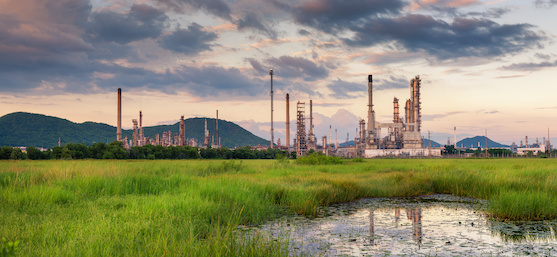
What is FTIR? We’ll explain.
August 9, 2021
By: Michael Denomme
What is Extractive Fourier Transform Infrared Spectroscopy (FTIR)?
The quick answer:
Extractive Fourier Transform Infrared Spectroscopy, often referred to as extractive FTIR, is an instrumental technology we use to identify and quantify gas compounds in stack emissions and industrial process streams. FTIR technology uses the principle of infrared light absorption for gas analysis. It can be set up to monitor several gases at once and on a continuous real-time basis. The “extractive” prefix implies that a sample is continuously extracted from the parent gas stream and transported via a heated transfer line to a remotely stationed FTIR analyzer.
Brief History:
FTIR is not a new development since most analytical laboratories have used FTIR technology for the analysis of solid and liquid samples. The extractive FTIR system used for stack testing has been designed for the identification and quantification of gas compounds only.
The use of extractive FTIR for stack gas and process analysis started in the early 1990’s with the advent of US Clean Air Act Amendments (CAAA) of 1990. Developing the capabilities of FTIR technology was considered a significant step to establishing test methods for most of the 189 hazardous air pollutants (HAPS) listed in Title III of the CAAA.
As the technology and computing power increased over the years, so did its popularity as an effective gas monitoring instrument. Today this technology is widely used in the United States and recognized by the USEPA and other regulatory agencies. It is less familiar in Canada, but we have found that it is gaining significant traction over the last couple years.
Methodology:
Several gases absorb infrared light. How a specific gas compound absorbs infrared light is distinctive to that compound. The amount of infrared light absorbed by a particular gas is proportional to its concentration in an enclosed duct.
The three criteria for using FTIR for stack gas analysis are:
- Target gas(es) must absorb infrared light (most gases do with the exception of diatomic molecules such as H2, O2, F2, N2 etc.
- Infrared absorption bands for the target gas(es) must be distinguishable and absent of interferences.
- Software reference spectra for the target gas(es) at a known pressure and temperature must be available.
To collect the data and adhere to quality assurance, FTIR gas monitoring programs follow one or more of these promulgated test methods:
- US EPA Methods 318, 320, and 321
- ASTM D6348
Applications:
FTIR can be used in many different applications across various industries such as: chemical, oil and gas, portland cement, fertilizer, power generation and various manufacturing. Applications include:
- Process trials
- Process optimization
- Control equipment efficiency testing
- Source screening
- Compliance assurance monitoring
- Emission factor development
- Relative accuracy assessment of continuous emission monitors
- Supporting emission inventories (NPRI / GHG)
Top Benefits:
For the evaluation of gaseous pollutants from industrial smoke stacks, the use of FTIR can offer significant cost savings for industry because it is an “all in one “system that can replace several traditional methods of monitoring gas emissions.
The ability to obtain continuous real time data of target pollutants while process changes are occurring is another big advantage. This feedback helps companies make quick and money-saving decisions that can optimize their processes and reduce pollutant emissions.
FTIR systems can replace traditional “wet method” sampling methods, typically used to evaluate “exotic” target gases such as: ammonia (NH3), hydrogen cyanide (HCN), hydrogen fluoride (HF), nitrous oxide (N2O), CFCs and HCFCs. The added benefit is continuous, real-time data reporting, instead of composite data reported several weeks after the sample date.
Finally, the electronic FTIR “sample file” is a permanent record that can be reanalyzed over and over again to identify and re-quantify gas compounds not initially evaluated during the field measurements. This could save significant costs associated with additional field surveys.
How Montrose Can Help
Our Canadian and U.S. teams have decades of FTIR field experience and knowledge as we’ve helped numerous customers make accurate, data-driven decisions to lower emissions and improve their processes based on FTIR real-time results. The use of FTIR is a dependable technique for compliance or process-related gas testing projects.

